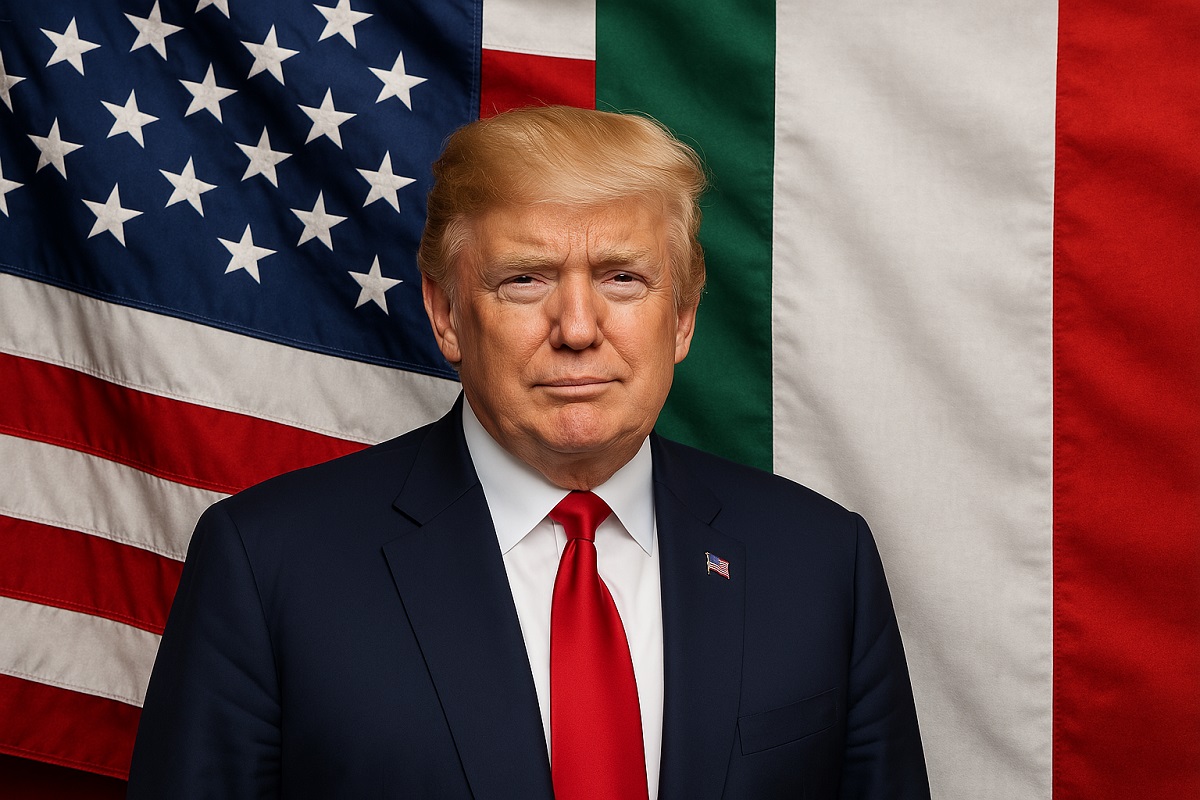
The word “war” feels heavy when applied to trade, especially in a world where real wars are being fought. But that’s what President Donald Trump is effectively triggering: one action, one reaction – just like any conflict. While he calls it an “economic declaration of independence,” the announcement made from the Rose Garden hits like a punch to the gut. The newly imposed American tariffs range from 10% up to nearly 50% for some Asian countries.
Europe has been slapped with a 20% tariff, while China faces 34%. “This is the start of a new golden age – we’ll be richer than ever,” Trump said, promising to bring America back to the glory days of a bygone era.
What does this mean for Italy’s economy?
There is growing concern. According to Orsini from Confindustria, the hardest-hit sectors will include pharmaceuticals, fashion, food, and industrial machinery. A major risk is that Italian companies will relocate production to the U.S. to avoid tariffs—precisely the outcome Trump wants, as it would bring jobs and investments to American soil.
Confindustria, even before the official announcement, revised its 2025 GDP growth forecast down to 0.6%, from the government’s more optimistic 1.2%. If tensions escalate, growth could fall further to 0.2% in 2025 and 0.3% in 2026.
Meloni calls the tariffs a mistake
Italian Prime Minister Giorgia Meloni, previously cautious in her comments, spoke out after Trump’s move. She called the American tariffs a “mistake that benefits no one” and added, “We will do everything we can to reach an agreement with the United States and avoid a trade war that would inevitably weaken the West while empowering other global players.”
A study from the UK’s Aston Business School, cited by the Financial Times, placed Italy as the fifth most exposed country after Mexico, Canada, Ireland, and China.
Who will feel the most pain?
Luxury buyers won’t stop purchasing Ferraris, but small and mid-sized Italian companies in the food and beverage sector will suffer. Wine, sparkling wine, cheese, cured meats, pasta, and fashion items will be hit the hardest. Why would an average American pay more when they can buy “Italian-sounding” products made in the U.S.?
According to Coldiretti, the price of authentic Italian food products could rise by €1.6 billion for American consumers. This would lead to a sales drop, damaging Italian producers who may struggle to find alternative export markets.
The broader economic impact could reach between €4 and €7 billion, with ripple effects on jobs, investment, and overall competitiveness, according to Mario Serpillo, president of the Unione Coltivatori Italiani.
Confindustria Accessori Moda also expressed concern. “In 2024, exports of footwear, leather goods, tanning products, and fur to the U.S. totaled nearly €3 billion. While this reflects a slight 3.5% dip from 2023, it still shows the strength and appeal of Made in Italy.”
What’s at stake for Italy?
Analysts predict that Italian exports could decline by 2.8%, and imports by 3.3%. This would hurt businesses and workers alike. Household income and overall well-being could shrink by up to 5% due to higher prices on imported goods and lower competitiveness.
The tariffs don’t just hit exports—they also affect imports from the U.S. Technology, industrial machinery, and raw materials from America will become more expensive.
What does Italy export to the U.S.?
According to Istat, Italy exported €67.3 billion worth of goods to the U.S. in 2023, trailing only Germany (€74.6 billion) and ahead of France (€63.4 billion). Italy imported €25.2 billion in American goods. The trade relationship clearly favors Italy.
Last year, Italy was the top EU exporter to the U.S. in wine, food, fashion, furniture, metal products, jewelry, and eyewear. The U.S. market is a key outlet for Italian exports, especially for small and mid-sized companies that cannot easily relocate production but instead operate on a regional scale.
Auto tariffs hit Europe hard
We’ve covered this issue extensively in recent weeks, and now it’s official. Starting April 3, 2025, Trump will impose a 25% tariff on imported cars. The measure directly impacts vehicle exports from the European Union, including Italy.
For Europe’s auto industry, the risks are real – and unpredictable.